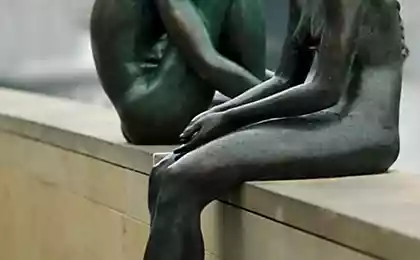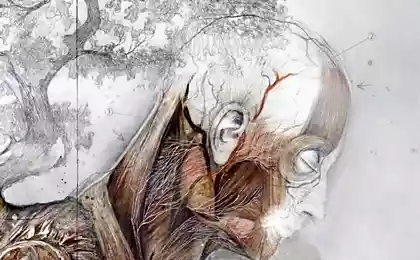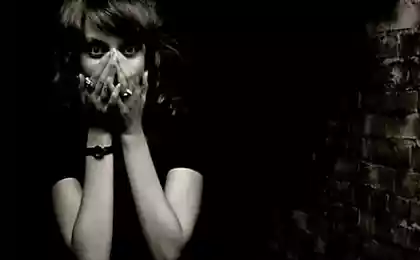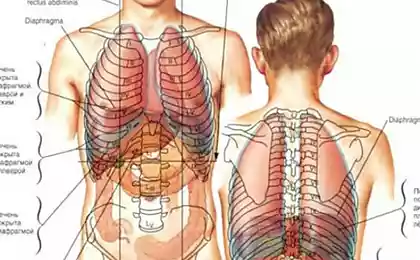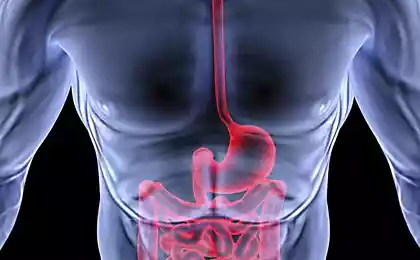479
Psychosomatics: Aperture — fear, anger and pain that we swallowed
"Armor blocks anxiety and have not found the output energy is at the cost of impoverishment of personality, loss of natural emotion, the inability to receive pleasure from life and work."
Wilhelm Reich
The diaphragm is the secret center of control and management, one of the "open secrets" of the human body: everybody knows that we have a diaphragm, but nobody pays her special attention and do not think about what she's doing. Because usually there is a lot more interesting things.
When, after abundant absorption of junk food starts to hurt the stomach, we suddenly realize that we have a gut. Breathing in too much smoke and started coughing, we are reminded of the lungs and their need for fresh air. When we feel sexual desire, our attention is drawn to the genitals.
But the aperture? It just does not appear in the painting of the body. And it controls our emotional expression more than any other segment.
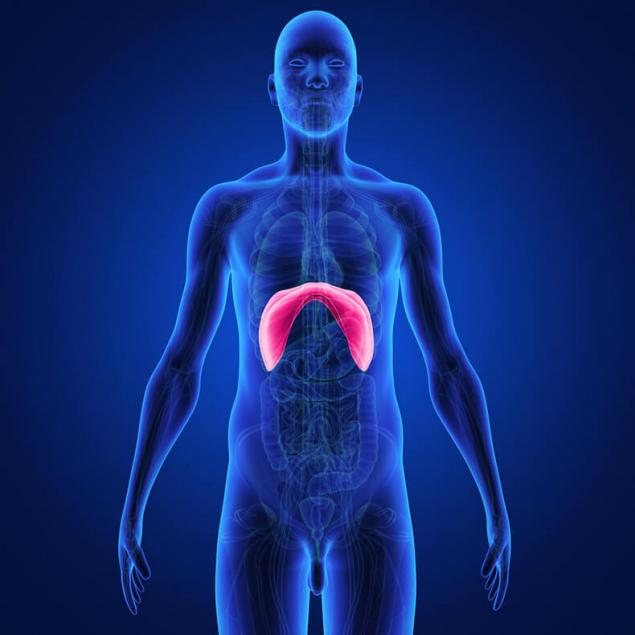
The diaphragm is a thin dome-shaped muscle group that are placed directly under the light and are in constant motion. Whenever we inhale, the diaphragm muscle is reduced by shifting down to create a space for flow of air in the lower part of the lungs. Whenever we exhale, the diaphragm moves up, pushing air out.
Breathing is one of the functions of the body that never stop. It happens automatically, continuously and without interruption, from the moment of birth and until death. Thus, the diaphragm is continuously pulsating, moving up and down, and this constant surge makes it one of the main means of transmission of energy in the body.
According to Reich, one of the basic principles of human health is that energy must flow freely through the seven segments, waves or pulses moving through the liquid contents of the body. This movement of energy up and down throughout the body aperture is a key site because it is here more than anywhere else, the energy may be blocked.
Our breath to a certain extent, available to conscious control. If desired, we can for a limited time to hold your breath, straining for that aperture. You can try to do it right now. Take a breath and hold it. Feel like you've squeezed the muscles of the diaphragm to stop breathing.
This compression significantly reduces what is happening in the body of the pulsation, preventing the flow of energy. And because the energy flow is closely linked to the expression of our feelings, which means that, straining the diaphragm, can also hinder the movement of the waves of emotion. Thus, we have the ability to monitor from this location your feelings — that's what we do.
Located slightly below the belly and sexual center, and, in a sense, the diaphragm-like passage that leads to our inner animal energy, all the primary feelings associated with either infancy or sensuality — with the most basic emotions. Whenever we want to cut yourself from these feelings, either rising from the stomach or from the sexual center, the diaphragm is the place where we create tension to avoid contact with them, to put these primitive impulses back and drive them out of sight and out of our consciousness.
When we talk about the state of emotional breakdown in humans, in which one part of the body expresses a kind of desire and aspiration, and the other is struggling with this impulse or rejects it, often this splitting passes through the diaphragm.
This is especially true for situations related to love and sexuality. The heart, located above the diaphragm, expressed a desire, while the sexual centre located under it, may want something completely different.
In many ways the mind is constantly fighting with our basic needs, and the diaphragm takes a very active part.
The voltage associated with the internal thinking and accumulates in the diaphragm, and therefore, anyone who spends a lot of time thinking, planning, reasoning and comparing, you will inevitably create in this segment of chronic stress. This is another aspect of the role of the diaphragm as the main control center.
All three basic emotions — fear, anger and pain, holding back the diaphragm and generated the resulting tension manifests as tightness. Muscles become stiff and difficult to move.
The displacement of the diaphragm down we begin to get in touch with the fear that is held around the core energy of the body, approximately in the area of physical belly. As soon as the diaphragm begins to flow downward flow of energy, the stomach is involved in ripple and in this moment the client comes into contact with fear.
Most clearly this effect is seen in thin women with flat stomachs. They are easy to carry to the type of holding fear: they have weak muscles on the periphery of the body, and they are very light, as if with wings on the heels, or as if their bones are made of light material. In such flat stomachs can only wonder where placed inside of them.
However, in a tight stomach can be kept very a lot of fear, and this is the first emotion that we face when the trap door swings open aperture. It can be very intimidating because it is often associated with feelings of helplessness, fear not to cope with some important problem or inability to stand when meeting a certain powerful figure.
All the energy of the people who are holding fear, withdrawn from the outside world to the center and is compressed there. This is their way of escape from some of the experienced threat or danger. But this compression leads to physical exhaustion. When the energy is drawn to the center, all you can do is fall.
The leg no energy to stand, in the hands of no strength to defend, and the eyes become blind, and disabled. This is an extreme case, but I highlight it to show how people holding fear, the periphery becomes ineffective due to the unavailability of the energy source, because all the energy is retained around the nucleus.
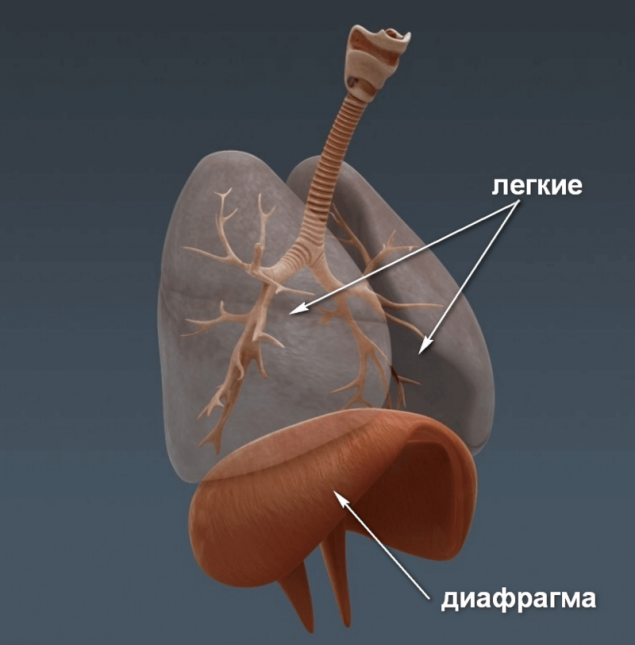
When we breathe into the belly, allowing energy to penetrate the diaphragm, fear can be released. And only then is there the opportunity to feel their strength, because the blocking aperture does not admit us to the vital energy that is stored in the lower part of the body.
In the case when the retained emotion is anger, the diaphragm stiffens to prevent the movement of energy outward. In the case of retention of a pain it is immobilized in both directions — when inhaling and when exhaling — so blocked the very feeling.
Add to this the ability of the diaphragm to divide the body in half, splitting the energy of the already described way, and you will be able to realize how great the importance of this segment as a regulator of the flow of energy. And in connection with the throat it can cause a complete stop of energy, so will stop any movement, and hold everything in a kind of lifeless equilibrium.
The diaphragm muscle with the help of tissues and ligaments are attached around the circumference of the inner side of the whole thorax. Where the diaphragm is connected to the rear side of the body, held by fear.
Reich tells a lot about the retention of fear in the back, saying that the shape of the body in this place gives the impression of waiting for the blow to the back of the head. It is the result of shock, surprise attack... it seems that everything is fine, and then: "Bang!" Head goes back, your shoulders tense up, the spine bends into an arch. No wonder we say that from a horror movie "back cold" — because it involves the fear held in our backs.
The work with this region often brings to the surface hidden there amazing and unexpected things. Threads held back, it's something secret — that's why we hide them in the back.
The diaphragm is connected with many thingsthat we swallowed — literally, figuratively and energetically, and especially swallowing that would cause us to feel anger, disgust, nausea. Then, at the moment of swallowing, we could not give vent to the natural gag reflex, but some exercises help to provoke him.
Nausea often comes with such force that the man can really rip, and that's good, because along with the vomiting there is a powerful emotional release. Often with disgust pouring out rage: "How dare you make me eat peas?" or "How dare you force me to go to school?" Along with this nausea and rage, as: relaxes the diaphragm, on a surface there is all that we ever forced to do and what we didn't want to do.
Now you already know that our emotions can be kept, to be felt and expressed in all segments. But as we move down these emotions begin to emerge from deeper areas of the body, and thus increases their intensity.
In particular, if the client starts crying at the beginning of the liberation from the shell, then the energy of the tears and mourning will be expressed through the eyes, throat, mouth and, possibly, to a small extent through the chest. That is, the energy will remain in the upper part of the body. Looking at the body of the client, I see that the energy does not penetrate below the rib segment and the crying is accompanied by a high pitched sound, a kind of whining and complaints. Or it contains some as whining — irritation that would turn into anger, but has little power and therefore can last forever.
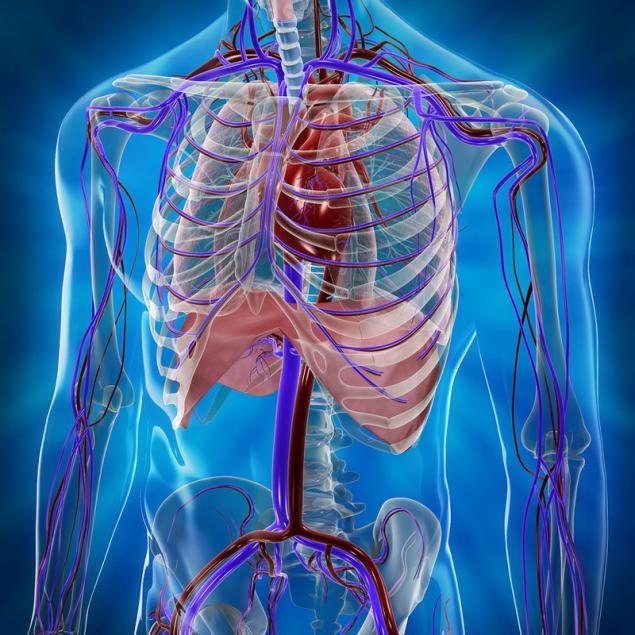
Signs of poor circulation, which should not be ignoredChronic facial clips — it's IMPORTANT to know!
As I invite the client to breathe deeply and set to work with his rib cage, the lungs make more deep breaths, and then the sobs start to come from the heart, rushing through the throat to the mouth and eyes. Then, if the client remains with that cry comes a time when the diaphragm relaxes, the energy goes into the lower segments of the abdomen are raised deep sobs.
You know the expression "nakivali heart sobs" and the expression "pain, gut-wrenching guts inside out" or "feelings, which makes the gut". This is a linguistic indication of how the intensity of emotions as we descend in the lower part of the body.published
Techniques Of Wilhelm Reich
Source: teleska.pro/top/osnovy-telesno-orientirovannoi-psixotera/#eye
Wilhelm Reich
The diaphragm is the secret center of control and management, one of the "open secrets" of the human body: everybody knows that we have a diaphragm, but nobody pays her special attention and do not think about what she's doing. Because usually there is a lot more interesting things.
When, after abundant absorption of junk food starts to hurt the stomach, we suddenly realize that we have a gut. Breathing in too much smoke and started coughing, we are reminded of the lungs and their need for fresh air. When we feel sexual desire, our attention is drawn to the genitals.
But the aperture? It just does not appear in the painting of the body. And it controls our emotional expression more than any other segment.

The diaphragm is a thin dome-shaped muscle group that are placed directly under the light and are in constant motion. Whenever we inhale, the diaphragm muscle is reduced by shifting down to create a space for flow of air in the lower part of the lungs. Whenever we exhale, the diaphragm moves up, pushing air out.
Breathing is one of the functions of the body that never stop. It happens automatically, continuously and without interruption, from the moment of birth and until death. Thus, the diaphragm is continuously pulsating, moving up and down, and this constant surge makes it one of the main means of transmission of energy in the body.
According to Reich, one of the basic principles of human health is that energy must flow freely through the seven segments, waves or pulses moving through the liquid contents of the body. This movement of energy up and down throughout the body aperture is a key site because it is here more than anywhere else, the energy may be blocked.
Our breath to a certain extent, available to conscious control. If desired, we can for a limited time to hold your breath, straining for that aperture. You can try to do it right now. Take a breath and hold it. Feel like you've squeezed the muscles of the diaphragm to stop breathing.
This compression significantly reduces what is happening in the body of the pulsation, preventing the flow of energy. And because the energy flow is closely linked to the expression of our feelings, which means that, straining the diaphragm, can also hinder the movement of the waves of emotion. Thus, we have the ability to monitor from this location your feelings — that's what we do.
Located slightly below the belly and sexual center, and, in a sense, the diaphragm-like passage that leads to our inner animal energy, all the primary feelings associated with either infancy or sensuality — with the most basic emotions. Whenever we want to cut yourself from these feelings, either rising from the stomach or from the sexual center, the diaphragm is the place where we create tension to avoid contact with them, to put these primitive impulses back and drive them out of sight and out of our consciousness.
When we talk about the state of emotional breakdown in humans, in which one part of the body expresses a kind of desire and aspiration, and the other is struggling with this impulse or rejects it, often this splitting passes through the diaphragm.
This is especially true for situations related to love and sexuality. The heart, located above the diaphragm, expressed a desire, while the sexual centre located under it, may want something completely different.
In many ways the mind is constantly fighting with our basic needs, and the diaphragm takes a very active part.
The voltage associated with the internal thinking and accumulates in the diaphragm, and therefore, anyone who spends a lot of time thinking, planning, reasoning and comparing, you will inevitably create in this segment of chronic stress. This is another aspect of the role of the diaphragm as the main control center.
All three basic emotions — fear, anger and pain, holding back the diaphragm and generated the resulting tension manifests as tightness. Muscles become stiff and difficult to move.
The displacement of the diaphragm down we begin to get in touch with the fear that is held around the core energy of the body, approximately in the area of physical belly. As soon as the diaphragm begins to flow downward flow of energy, the stomach is involved in ripple and in this moment the client comes into contact with fear.
Most clearly this effect is seen in thin women with flat stomachs. They are easy to carry to the type of holding fear: they have weak muscles on the periphery of the body, and they are very light, as if with wings on the heels, or as if their bones are made of light material. In such flat stomachs can only wonder where placed inside of them.
However, in a tight stomach can be kept very a lot of fear, and this is the first emotion that we face when the trap door swings open aperture. It can be very intimidating because it is often associated with feelings of helplessness, fear not to cope with some important problem or inability to stand when meeting a certain powerful figure.
All the energy of the people who are holding fear, withdrawn from the outside world to the center and is compressed there. This is their way of escape from some of the experienced threat or danger. But this compression leads to physical exhaustion. When the energy is drawn to the center, all you can do is fall.
The leg no energy to stand, in the hands of no strength to defend, and the eyes become blind, and disabled. This is an extreme case, but I highlight it to show how people holding fear, the periphery becomes ineffective due to the unavailability of the energy source, because all the energy is retained around the nucleus.

When we breathe into the belly, allowing energy to penetrate the diaphragm, fear can be released. And only then is there the opportunity to feel their strength, because the blocking aperture does not admit us to the vital energy that is stored in the lower part of the body.
In the case when the retained emotion is anger, the diaphragm stiffens to prevent the movement of energy outward. In the case of retention of a pain it is immobilized in both directions — when inhaling and when exhaling — so blocked the very feeling.
Add to this the ability of the diaphragm to divide the body in half, splitting the energy of the already described way, and you will be able to realize how great the importance of this segment as a regulator of the flow of energy. And in connection with the throat it can cause a complete stop of energy, so will stop any movement, and hold everything in a kind of lifeless equilibrium.
The diaphragm muscle with the help of tissues and ligaments are attached around the circumference of the inner side of the whole thorax. Where the diaphragm is connected to the rear side of the body, held by fear.
Reich tells a lot about the retention of fear in the back, saying that the shape of the body in this place gives the impression of waiting for the blow to the back of the head. It is the result of shock, surprise attack... it seems that everything is fine, and then: "Bang!" Head goes back, your shoulders tense up, the spine bends into an arch. No wonder we say that from a horror movie "back cold" — because it involves the fear held in our backs.
The work with this region often brings to the surface hidden there amazing and unexpected things. Threads held back, it's something secret — that's why we hide them in the back.
The diaphragm is connected with many thingsthat we swallowed — literally, figuratively and energetically, and especially swallowing that would cause us to feel anger, disgust, nausea. Then, at the moment of swallowing, we could not give vent to the natural gag reflex, but some exercises help to provoke him.
Nausea often comes with such force that the man can really rip, and that's good, because along with the vomiting there is a powerful emotional release. Often with disgust pouring out rage: "How dare you make me eat peas?" or "How dare you force me to go to school?" Along with this nausea and rage, as: relaxes the diaphragm, on a surface there is all that we ever forced to do and what we didn't want to do.
Now you already know that our emotions can be kept, to be felt and expressed in all segments. But as we move down these emotions begin to emerge from deeper areas of the body, and thus increases their intensity.
In particular, if the client starts crying at the beginning of the liberation from the shell, then the energy of the tears and mourning will be expressed through the eyes, throat, mouth and, possibly, to a small extent through the chest. That is, the energy will remain in the upper part of the body. Looking at the body of the client, I see that the energy does not penetrate below the rib segment and the crying is accompanied by a high pitched sound, a kind of whining and complaints. Or it contains some as whining — irritation that would turn into anger, but has little power and therefore can last forever.

Signs of poor circulation, which should not be ignoredChronic facial clips — it's IMPORTANT to know!
As I invite the client to breathe deeply and set to work with his rib cage, the lungs make more deep breaths, and then the sobs start to come from the heart, rushing through the throat to the mouth and eyes. Then, if the client remains with that cry comes a time when the diaphragm relaxes, the energy goes into the lower segments of the abdomen are raised deep sobs.
You know the expression "nakivali heart sobs" and the expression "pain, gut-wrenching guts inside out" or "feelings, which makes the gut". This is a linguistic indication of how the intensity of emotions as we descend in the lower part of the body.published
Techniques Of Wilhelm Reich
Source: teleska.pro/top/osnovy-telesno-orientirovannoi-psixotera/#eye



